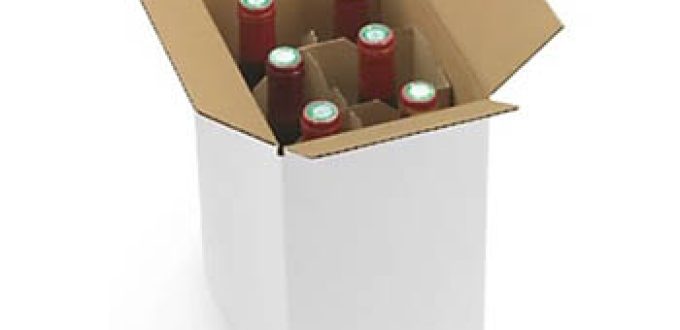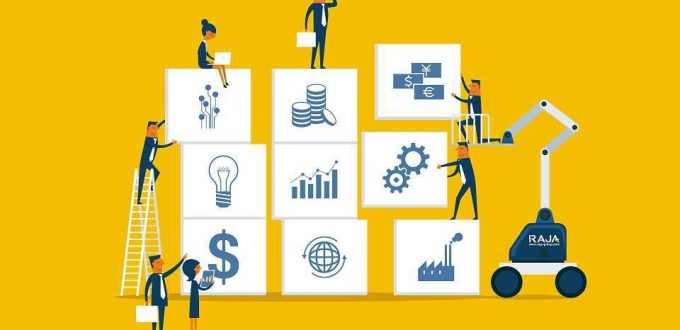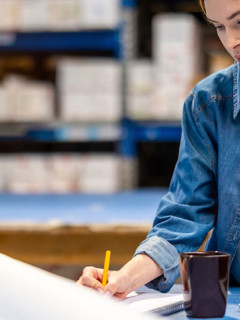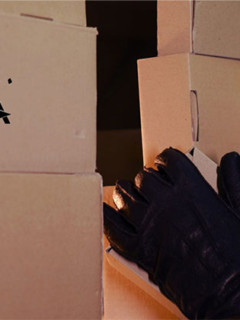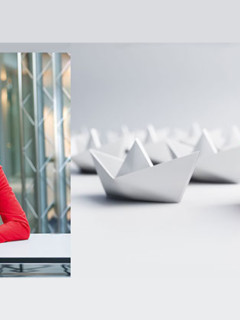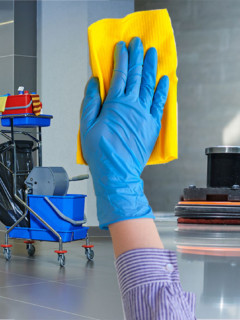Have you heard of the “PPWR”? It stands for the new EU Proposal on Packaging and Packaging Waste Regulation. This is a new legislative proposal from the European Commission that was launched at the end of 2022. As a building block of the European Green Deal, it is intended to ensure a uniformly more sustainable Europe by 2030 (or 2040). This European Packaging and Packaging Waste Regulation, or colloquially the Packaging Act, will set new rules for the packaging of products in e-commerce, (take-away) food and POS. It is the first time that e-commerce packaging is explicitly mentioned in this context. It is all the more interesting to see what impact this will have on online retailers and how RAJA can already support you. Read on and get ready for the future.
This is what you can expect in this blog post
- Why was the PPWR initiated?
- How did the European Packaging Act come about?
- What does the new European Packaging Act contain?
- Get ready for the European Packaging Act
Why was the PPWR initiated?
On average, each European produces almost 180 kg of packaging waste per year. Packaging is one of the biggest consumers of fresh (unrecycled) materials: A full 40% of plastics and 50% of paper are used for packaging in the EU. Without appropriate countermeasures, the share of packaging waste in the EU will increase by a further 19% by 2030, with plastic packaging increasing by as much as 46%. To counteract this development, sustainable solutions to this problem are being actively sought.
Furthermore, there are very different approaches and regulations for handling, reducing and recycling packaging across the EU at country level. Some countries are pioneers and others are laggards, especially in terms of recycling rates. Internationally active retailers also face the challenge of complying with all regulations in the countries in which they operate. This also applies to online retailers who ship abroad. The new EU proposal on packaging waste aims to harmonise and simplify these EU-wide approaches to a higher standard.
In Germany, for example, distributors of packaging (this includes online traders) have to register for a packaging licence in the central register LUCID and pay a flat fee for the handling and recycling of packaging waste. This is done through a dual system where private companies take over packaging disposal for companies for a fee under the Packaging Act.
How did the European Packaging Act come about?
The European Packaging Act did not come out of the blue. It is the result of a years-long process aimed at making our European economy more sustainable and greener. Below we list the most important milestones for you.
2015: With the Paris Accords, international agreements were made to ensure the viability of our planet. The goal is that together we emit less CO2. The consequences of these agreements continue to seep into our daily lives year after year; just think of the increase in driving electric cars or the ban on single-use plastic.
2019: Following the Paris agreements, the EU has launched the Green Deal, a list of initiatives to help member states achieve a more modern and cleaner economy. The aim is to bring net greenhouse gas emissions to zero by 2050. It also aims to decouple economic growth from the use of external resources. The Green Deal has been devolved to local and regional authorities, among others.
What does the new European Packaging Act contain?
Specifically, the EU Packaging Regulation (PPWR for short) aims to make packaging more recyclable and reusable by 2030. The focus is on the idea of the circular economy: today’s packaging should also be able to serve as tomorrow’s packaging. Measures to reduce packaging waste and to reduce the complexity of packaging materials are also being considered. For example, through better separation of plastic and paper.
- The main target is to reduce packaging waste by 15% per member state per capita by 2040 (compared to 2018). If no changes were made to current trends and legislation, packaging waste generation in the EU would be approximately 37% higher by 2040.
- To encourage the reuse or refilling of packaging, companies will have to offer consumers a certain percentage of their products in reusable or refillable packaging, e.g. take-away meals or e-commerce deliveries. It also standardises some packaging formats and requires clear labelling of reusable packaging.
- Unnecessary packaging such as disposable food and drink packaging consumed in restaurants and cafés, disposable fruit and vegetable packaging, miniature shampoo bottles and other miniature packaging in hotels will be banned.
- Packaging is to become fully recyclable by 2030. To achieve this, among other things, criteria for the design of packaging will be prescribed and mandatory deposit systems for plastic bottles and aluminium cans will be introduced. In addition, it will be specified which types of packaging must be compostable so that consumers can throw them into organic waste.
- In addition, there will be mandatory recycled content that manufacturers must include in new plastic packaging. This should help to recycled plastic into a valuable raw material as the example of PET bottles shows in the context of the Single-Use Plastics Directive.
At present (as of 2023), it is only a legislative proposal. This must then be transformed into a regulation. Such a regulation is an equivalent and binding requirement for all EU member states to create uniform rules for the entire market. Once the PPWR is in force, it will also affect all retailers in the e-commerce sector.
Fortunately, the packaging market in Germany is already doing quite well. Many requirements from the legislation have been proactively addressed in recent years. Another advantage is that you can already find many of the future-proof, environmentally friendly packaging in the RAJA range – because as a pioneer of ecological change, we like to be in the front row. Read on and find out how RAJA can already prepare you for the European Packaging Act.
Get ready for the European Packaging Act – with RAJA
Packaging or packages that do not comply with the European Packaging Act may no longer be placed on the market in the future. For e-commerce companies, this therefore means an additional point to consider. As a website operator, do you suddenly feel the hot breath on your neck? No need to worry! In the following, we present some RAJA packaging with which you can already anticipate most of the requirements of the PPWR.
1. choose packaging with a circular design
PPWR requirement: The European Packaging Act focuses strongly on the shape and composition of packaging. The circular principle plays a major role in this. The bottom line is that you should be able to easily transform today’s packaging into tomorrow’s packaging. Packaging that can be easily sorted and recycled within a waste stream is preferred. This is also called mono-material packaging or single-material packaging : Packaging that consists entirely of paper and cardboard, for example, can be easily sorted and processed into a new paper product. In this way, the raw material cycle can be (more) easily closed. Paper is excellent in this respect, as its high recycling rate in Europe proves (approx. 85% in Germany and approx. 89% in Austria).
RAJA’s solutions: RAJA offers a huge range of products made entirely of paper, cardboard or PET. In this way, we improve the short-term recyclability of most packaging. This packaging is the result of constant innovation and close coordination with our suppliers. For almost every traditional packaging, we can already offer an alternative made of paper or recycled plastic.
With the RAJA innovations below, you can create packaging made entirely from an easy-to-sort mono-material: paper!
2. choose recycled materials
Requirement of the PPWR: From 1 January 2030, all packaging must meet new recycling thresholds. Exactly how high these thresholds are depends on the type of packaging. For plastic, for example, this means that every package must contain a minimum proportion of post-consumer recyclates. This is plastic that is obtained from recycled household waste.
RAJA solutions: When selecting plastic packaging, RAJA is increasingly replacing pure virgin material with recycled material. In total, we are already talking about around 500 plastic products, from bags to bubble wrap and air pillows. Our goal is to increase the demand for this raw material through a high proportion of recycled plastic in our products. Higher demand for recycled plastic also increases the incentive to sort plastic really well. This puts us many years ahead of the legal framework that is now in place.
Good to know: At RAJA, we deliberately choose recycled plastic that is completely transparent. Why is that? You often see bubble wrap or bags to which the manufacturer has added a green dye. This green appearance makes it clear to consumers that the plastic is made entirely (or partly) from recycled material. The disadvantage of this is that the plastic is more difficult to recycle later. This is because the green dye “pollutes” the process. So if you are environmentally conscious, you should always choose packaging made from recycled plastic that is completely transparent. Below are some examples of popular plastic packaging with a high percentage of recycled material:
Equally important in this story are our products made from recycled paper and cardboard. Virtually every RAJA corrugated folding carton contains a high percentage of recycled material (70% on average). This recycled content is always an important factor for us when selecting new products. In this way, we are already anticipating tomorrow’s requirements today. Moreover, paper packaging materials are easy to sort after use. By the way, did you know that cardboard can be recycled up to 10 times? Once the cardboard boxes have been written off, they can easily be made into toilet paper or newsprint, for example.
3. avoid unnecessary packaging space.
Demand of the PPWR: Adé to big packaging! The European Packaging Act requires that the weight and volume of packaging be kept to a minimum – without compromising the safety and functionality of the packaging. In other words, no packaging with unnecessary gaps, such as double walls or double bottoms, may be marketed to pretend a larger product volume. After the introduction of the draft law, a maximum of 40 per cent empty packaging space will be allowed for collective packaging or e-commerce packaging.
RAJA’s solutions: Under the motto “Every product deserves customised packaging”, RAJA offers a range of 1,250 carton sizes and 1,300 bag sizes to choose from. So there is a perfectly fitting packaging for every type of product. The result? Less empty packaging space and less excess cushioning material. RAJA also advocates the use of mailing envelopes as a substitute for a cardboard box. Padded envelopes offer good protection for sensitive products and are much more compact than cardboard boxes. You therefore save both packaging material and transport costs (= the more compact you pack, the less transport volume you take up).
If you do need or prefer a cardboard box, you can choose a height-variable box. Or you can find the packaging that fits your product perfectly:
4. reuse and refill e-commerce packaging more often.
PPWR demand: In addition to recycling, the reuse and refilling of packaging plays an important role. The draft law contains clear requirements for the design of reusable packaging and the frequency of its reuse. According to the European Packaging Act, 10% of packaging in e-commerce (non-food) must be reusable from 2030. By 2040, this share is even to be increased to 50 % of all packaging. This means that we as a company have to look for a new way to deal with packaging…
RAJA solutions: In order to ensure the reusability of packaging, we need to be able to adapt return logistics to a sufficient extent. The industry is working hard behind the scenes to fill this blind spot on the map. Through the Green Deal, among others, RAJA wants to be one of the first players to participate in this project.
RAJA is actively working on new solutions to bring packaging to the market that is sufficiently strong, easily bendable and compact to be returned. Preferably, this type of packaging is also renewable and recyclable. We pay particular attention to innovations made of cardboard.
Thanks to all these efforts, we at RAJA can ensure that much less pure raw materials are needed in the entire production and use chain and that the amount of non-recyclable packaging waste is significantly reduced. In this way, we make our contribution to a circular economy and, together with our customers, reduce the pressure on overall raw material consumption.











